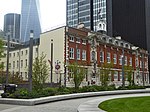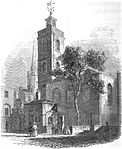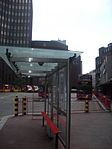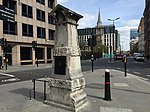David Game College
1974 establishments in EnglandAC with 0 elementsEducational institutions established in 1974Independent schools in the City of LondonLondon school stubs
David Game College is an independent school and sixth form based in Tower Hill, London. The college is coeducational and admits students between the ages of 13–22. Up to 400 students take full-time courses each year. The college is associated with the CIFE group of independent colleges and promotes an ethos of optimism, hard work and ambition to improve grades and enter a university of the student's choice. 67% of A Level graduates gained entry to Russel Group universities in 2017–2018. David Game College is rated as Outstanding in all areas in its latest Ofsted inspection.
Excerpt from the Wikipedia article David Game College (License: CC BY-SA 3.0, Authors).David Game College
Vine Street, City of London
Geographical coordinates (GPS) Address Nearby Places Show on map
Geographical coordinates (GPS)
| Latitude | Longitude |
|---|---|
| N 51.51316 ° | E -0.07643 ° |
Address
Sir John Cass's Foundation
Vine Street
EC3N 2DB City of London
England, United Kingdom
Open on Google Maps










